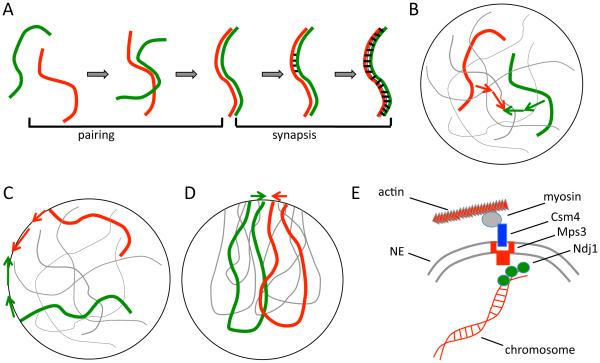Figure 1.
Meiotic chromosome dynamics. (A) Meiotic recombination is preceded by two distinct physical processes. First, homologous chromosomes, which initially are spatially separated in the nucleus, come together and align in a process known as pairing. Then, after pairing, a protein-based synaptonemal complex is assembled that links the two homologs together, a process known as synapsis. (B) Homolog pairing is a challenging physical problem if chromosomes must find each other by diffusion within the volume of the nucleus. (C) Telomeres of meiotic chromosomes are usually attached to the nuclear envelope, which has been proposed to speed up pairing by reducing the dimensionality of the search space from 3D to 2D. (D) Telomeres often cluster in a sub-region of the nuclear envelope, creating a chromosome configuration known as the bouquet. (E) Telomeres of meiotic chromosomes are subject to active forces generated by the cytoskeleton, to which they are coupled by NE-spanning protein complexes. This panel illustrates the telomere motion machinery of budding yeast, in which the telomere associated protein NDJ1p attaches to the NE spanning complex composed of MPS3p and CSM4p, which is then pulled along actin filaments by a myosin motor.

